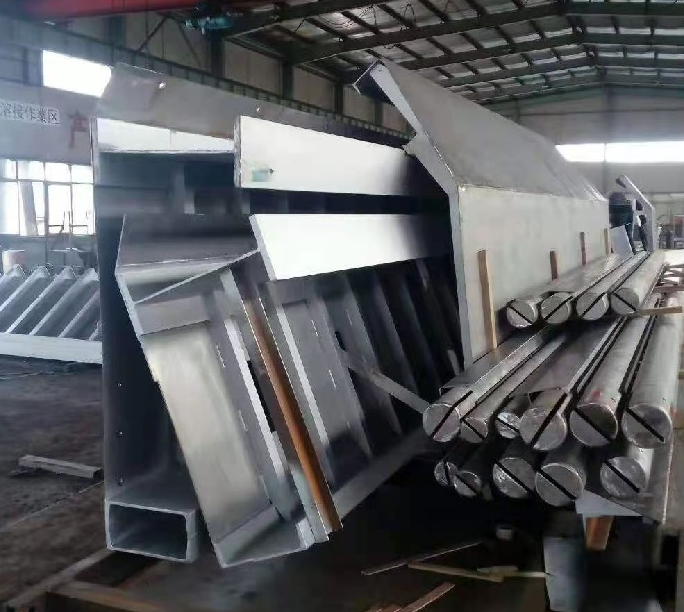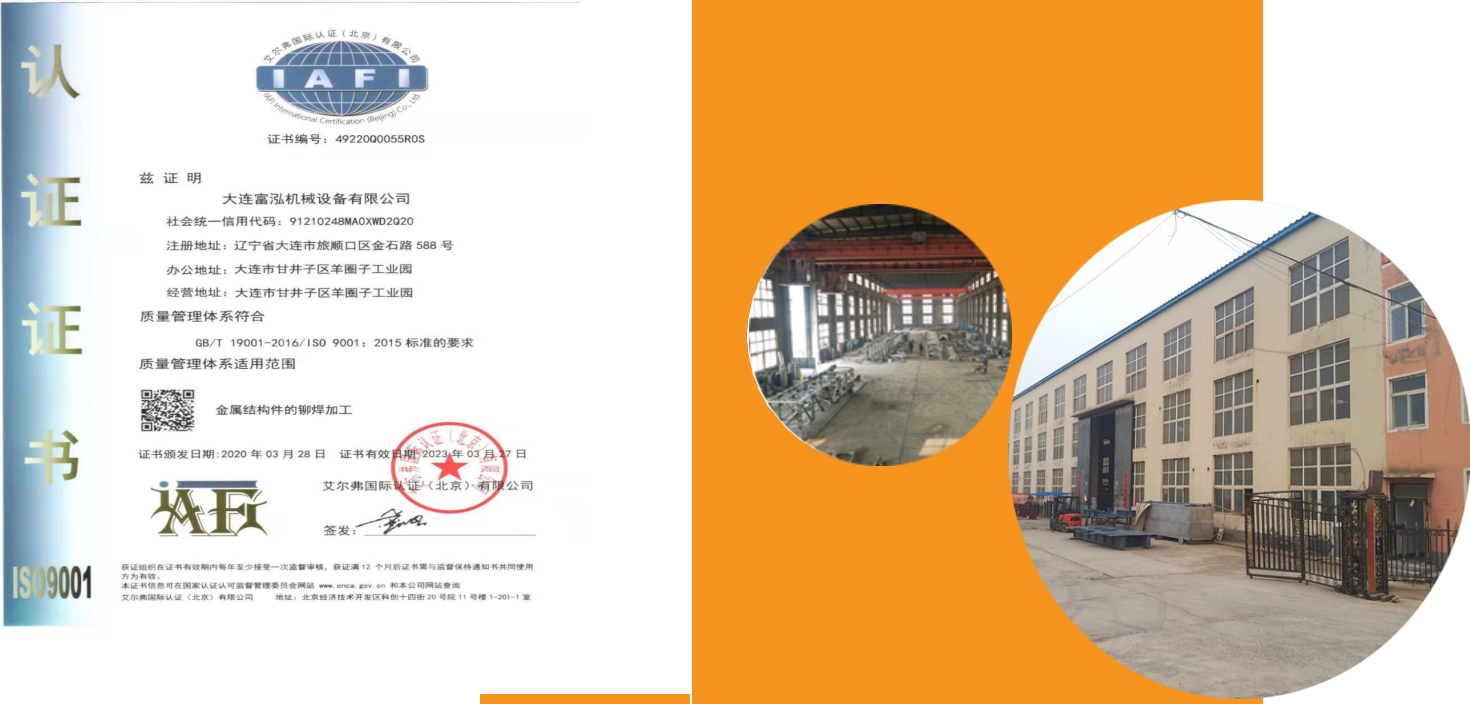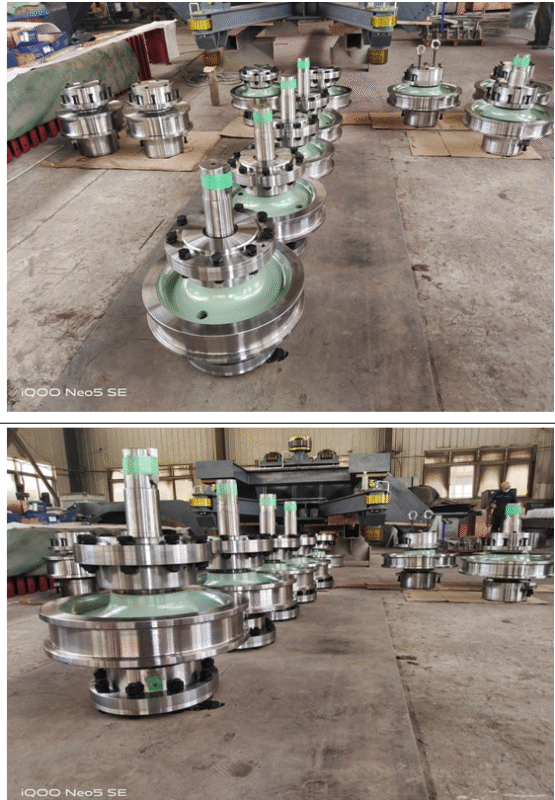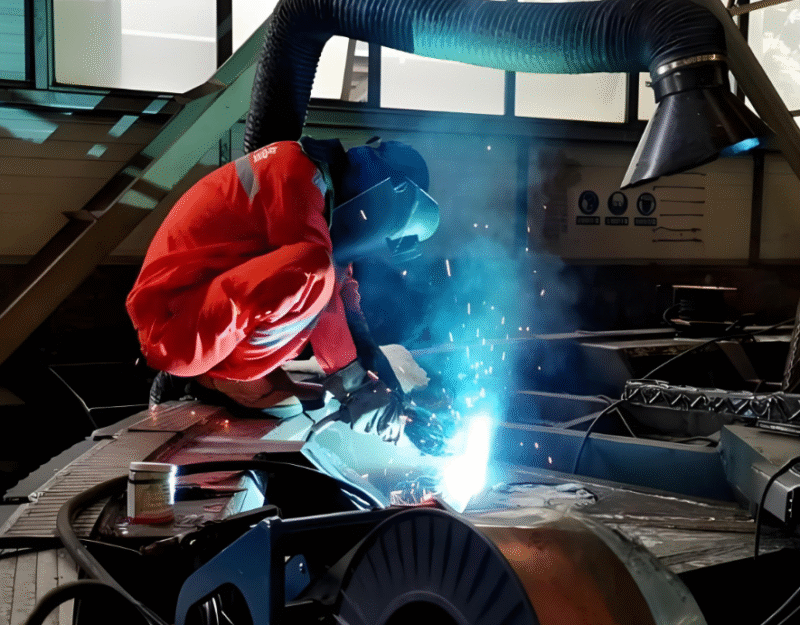Rivet Welding Processing Cost Optimisation: A Key Strategy for Improving Competitiveness
In the highly competitive manufacturing industry, theRivet weldingAs a basic and key process link, its cost control ability directly affects the enterprise'sprofitabilitytogether withMarket Competitiveness. The pursuit of low prices alone often compromises quality, and scientificCost optimisationaimOptimal balance of quality, efficiency and costIn this article, we will discuss the core components of riveting processing costs and practical optimisation strategies. This article will explore the core components of riveting and welding processing costs and practical optimisation strategies to help you effectively reduce costs and increase efficiency.
![图片[1]-铆焊加工成本优化:提升竞争力的关键策略-大连富泓机械有限公司](https://cndlfh.com/wp-content/uploads/2025/06/QQ20250625-204231.png)
Illustration: Efficient and standardised riveting and welding environment is the basis for cost optimisation
I. Main components of riveting and welding processing costs
-
Material costs (typically largest share: 40%-60%)
-
Cost of parent material: Prices, purchases, and utilisation rates (how much edge material) of metal raw materials such as steel sheets and profiles.
-
Welding material costs: Consumption of welding rods, wires, fluxes, protective gases (e.g. argon, carbon dioxide) and unit prices.
-
Riveted material costs: Cost of fasteners such as rivets (solid, hollow), bolts and nuts.
-
-
Labour costs (15%-30%)
-
Wages, benefits and training costs for direct operators such as riveters and welders.
-
Support staff costs directly related to riveting and welding operations.
-
Work efficiency: the effective processing time per unit of product.
-
-
Equipment and Energy Costs (10%-20%)
-
Depreciation or rental costs of equipment (welding machines, cutting equipment, riveting equipment, cranes, etc.).
-
Equipment routine maintenance, upkeep and repair costs.
-
Energy consumption such as electricity and gas (welding is a major energy consumer).
-
-
Process and ancillary costs (5%-15%)
-
Drawing process design, jig and fixture design and fabrication costs.
-
Inspection and quality control costs (non-destructive testing, dimensional inspection, etc.).
-
Pretreatment and post-treatment costs (rust removal, sandblasting, grinding, painting, etc.).
-
Indirect shared costs such as management, logistics and warehousing.
-
II. Core strategies for cost optimisation in riveting and welding processes
Strategy 1: Source Control - Optimising Design and Material Utilisation
-
DFMA (Design for Manufacturing and Assembly):
-
Work closely with the design department to meet the functionality of theSimplified structureThe company's main goal is to reduce the length of weld seams and complex nodes, and to optimise the layout of riveted holes.
-
Standardised component sizes, increased material versatility and reduced special customisation.
-
-
Refined nesting and nesting:
-
Use of professional nesting software for steel plates and profilesIntelligent Optimised SamplingThe company's products are designed to maximise material utilisation and minimise corner waste.
-
Centralised ordering and consolidation of production batches of the same or similar parts.
-
-
Material procurement and management:
-
Centralise procurement and establish long-term strategic cooperation with suppliers for better prices and stable supply.
-
Accurate calculation of material requirementsImplement first-in-first-out (FIFO) management to reduce inventory backlogs and waste.
-
Explore the use of more cost-effective alternative materials (subject to performance requirements).
-
Strategy 2: Improve Efficiency - Optimise Processes & Automation
-
Process review and standardisation:
-
Periodic review of existing processes.Selection of the most cost-effective welding/riveting method(e.g. replacing some manual welding with high-efficiency MAG welding and replacing hammer rivets with pull rivets).
-
Developed and strictly enforcedStandardised Operating Procedures (SOPs), reducing operational discrepancies and errors.
-
-
Application of jigs and fixtures:
-
Design and manufacture of applicableWorkholding fixturesThis ensures accurate positioning and fast clamping, dramatically reduces auxiliary time, improves consistency and reduces reliance on highly skilled workers.
-
-
Embrace automation and intelligence:
-
In processes with stable or repetitive batches, the introduction ofWelding robot, automatic riveting equipmentAlthough the upfront investment is large, in the long run it significantly improves efficiency and stability and reduces labour costs and rework. Although the upfront investment is large, in the long term it significantly improves efficiency, stability and reduces labour costs and rework.
-
applianceAutomated cutting equipment(e.g. plasma, laser cutting) to improve the accuracy and speed of undercutting.
-
-
Lean production management:
-
Identify and eliminate production processThe Seven Wastes(Waiting, handling, action, processing, inventory, overproduction, defects).
-
Optimise workshop layout to reduce material handling distances and time.
-
Strategy 3: Strict Quality Control - Reduce Rework and Waste
-
Enhanced process control:
-
Enhance welder/riveter skills training and certification to ensure that they are licensed.
-
Strict implementation of welding process parameters (current, voltage, speed, gas flow, etc.).
-
realiseFirst article inspectionand key nodes of thespot check.
-
-
Apply advanced testing techniques:
-
Rational use of visual testing (VT), ultrasonic testing (UT), radiographic testing (RT), etc..Early detection of defectsTo prevent defects from flowing into later processes and causing more damage.
-
-
Establishment of a quality traceability and feedback mechanism:
-
Record key process parameters and quality data for easy problem tracing and analysis.
-
Rapid feedback of quality issues to design and production to drive continuous improvement.
-
Strategy 4: Fine Management - Controlling Energy Consumption and Maintenance
-
Energy management:
-
select and useHigh efficiency classThe welding equipment.
-
Reasonable arrangement of production schedule to avoid equipment running empty.
-
Attend to leaks in the compressed air system and fix them promptly.
-
-
Preventive maintenance:
-
Establish and implement sound equipmentPreventive maintenance programmeIt reduces the downtime of sudden failures, ensures that the equipment operates in the best condition, prolongs the service life, and reduces the maintenance cost.
-
III. Key safeguards for cost optimisation implementation
-
Data-driven: Establish an accurate cost accounting system and analyse all cost data in depth to identify the real cost drivers and improvement points. Quantify the effectiveness of optimisation measures.
-
Cross-sectoral collaboration: Cost optimisation is a systematic project that requires close communication and collaboration between design, procurement, production, process, quality, finance and other departments.
-
A culture of continuous improvement: Integrate cost optimisation awareness into the corporate culture, encourage frontline staff to propose improvements, and establish a PDCA (Plan-Do-Check-Act) cycle mechanism.
-
Technology and talent inputs: Pay attention to the development of new technologies and processes in the industry and introduce them at the right time. Continuously invest in staff skills training to improve overall technical level and efficiency.
IV. Frequently asked questions on cost optimisation of riveting and welding processes
-
Q: Does cost optimisation come at the expense of product quality?
-
A: Scientific cost optimisation is never about cutting corners. At its core, it is about optimising costs throughDesign Optimisation, Efficiency Improvement, Waste Reductionto achieve cost reductions is done in a way that ensures or even improves quality. For example, more rational processes and tooling often lead to better consistency.
-
-
Q: How can I optimise costs for small lot, multi-variety production?
-
A: centreDesign standardisation(parts, interfaces),Process modularity, andFlexible Workwearapplications, as well as throughFine-tuned schedulingReduce changeover time. Improving the utilisation of common materials is also critical.
-
-
Q: Automation equipment is a big investment, how do I assess its value?
-
A: Need for a comprehensiveReturn on investment analysis: Consider direct labour cost savings, reduced rework scrap costs, increased capacity due to improved efficiency, long-term benefits from improved quality consistency (e.g., customer satisfaction, increased orders), and maintenance costs over the life of the equipment. Typically applies toHigh volume, stable or high precision requirementsThe products.
-
-
Q: How can I reduce welding material waste?
-
A: Accurate calculation of welding consumables requirements; optimisation of welding parameters to reduce spattering; strengthening of welding consumables storage management (moisture and contamination prevention); recycling of wire tips (where applicable); training of welders in standardised operations to reduce waste.
-
concluding remarks
Optimising the cost of riveting and welding processes is a task that needs to beGlobal perspective, fine management and continuous innovationIt is a long-term endeavour. It is not a simple "price squeeze", but a way ofTechnology Upgrade, Process Re-engineering and Management EnhancementIn order to achieve optimal allocation of corporate resources, cost reduction potential is systematically tapped. Under the premise of ensuring product quality and delivery reliability, enterprises that successfully implement cost optimisation will gain significant cost advantages in market competition and lay a solid foundation for sustainable development.
Immediate action: Examine your riveting and welding process and develop an exclusive roadmap for cost optimisation, starting with material utilisation, process efficiency and quality control. Every step of improvement adds to your competitiveness!












No comments